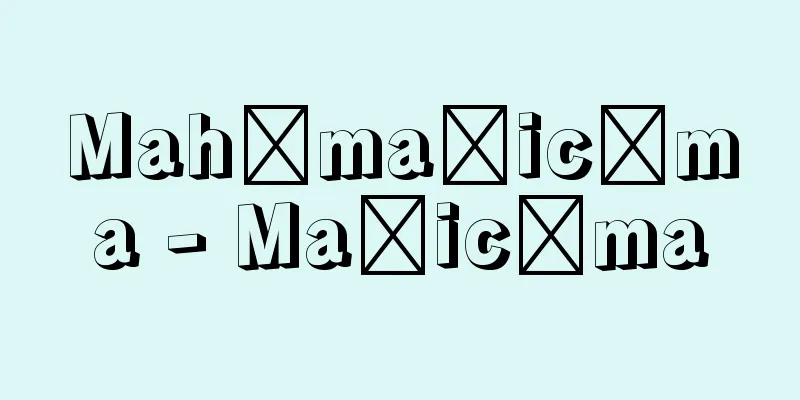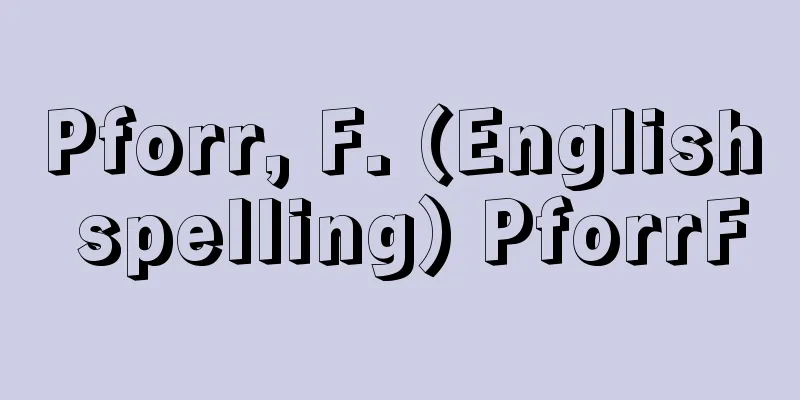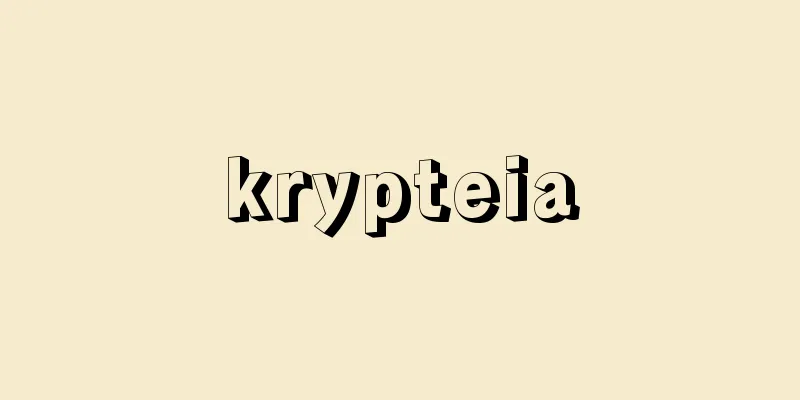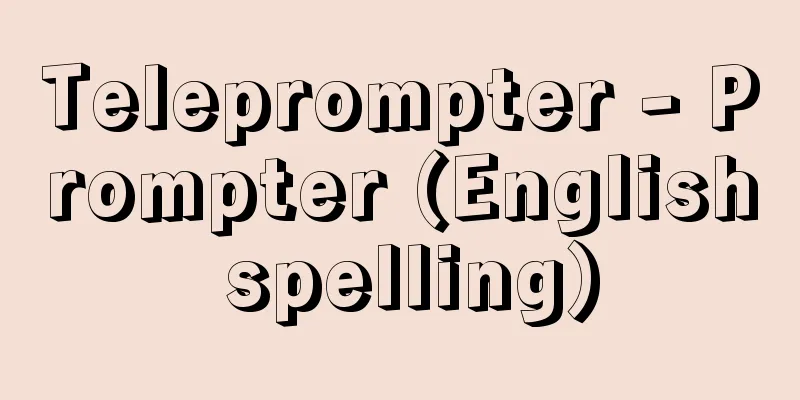World War II - The Second World War
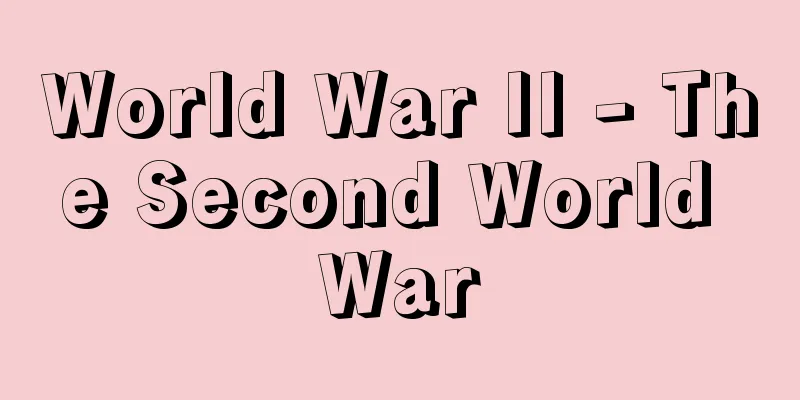
|
A war that took place on a global scale from September 1, 1939 to August 15, 1945, across Europe, the Middle East, Asia, and the Pacific. The Allied Powers, including the United States, the United Kingdom, the Soviet Union, and China, fought against the Axis Powers, which were led by the fascist three nations of Japan, Germany, and Italy, with the common goal of fighting against fascism, despite internal conflicts between capitalist and socialist nations. [Background] The Versailles system after World War I was centered on the victorious nations, such as the United Kingdom and France, and the socialist Soviet Union, the defeated nation of Germany, and the nations of the dependent territories were forced to make great sacrifices. The Great Depression of 1929 had a serious impact on the world, ending the so-called period of relative stability, intensifying international trade wars, and beginning the movement toward economic blocs. Germany, which was most affected by the depression, saw the emergence of the Nazi regime in 1933, which withdrew from the League of Nations and forced the overthrow of the Versailles system. Italy, which had already established a fascist regime under Mussolini in 1922, invaded Ethiopia in 1935 (Italian-Ethiopian War) and withdrew from the League of Nations in 1937. Japan, which had been forcing its invasion of mainland China after the Manchurian Incident in 1931, also withdrew from the League of Nations in 1933 and began the Sino-Japanese War in 1937. Capitalist countries such as Britain, the United States, and France responded to the aggressive policies of Japan, Germany, and Italy with a policy of appeasement. Meanwhile, anti-war and anti-fascist movements spread across borders among the people and became established as a popular front movement that included the working class and the middle class, and in 1936 popular front governments emerged in Spain and France. In China, an anti-Japanese national united front had already been formed with the August 1st Declaration of 1935 (see "Anti-Japanese War"). In this situation, Germany and Italy made a secret agreement in 1936 to intervene in the Spanish Civil War and overthrow the Popular Front government, and in 1936 the Anti-Comintern Pact was signed, forming the so-called Axis camp. Germany then annexed Austria, and in 1938 at the Munich Conference, seized the Sudetenland from Czechoslovakia. [Start of the war] After the Munich Conference, Germany further demanded the cession of the Polish Corridor, but Poland refused. After signing the German-Soviet Non-Aggression Pact, Germany suddenly declared war on Poland on September 1, 1939, and began its invasion, starting the Great War. The Soviet Union also independently occupied eastern Poland. On September 3, Britain and France declared war on Germany, but for the next six months, neither side took any active action except for the Soviet-French War, and the so-called "strange war" period began. [Early war situation] The war situation became active from the spring of 1940, German troops occupied Denmark and Norway, invaded the neutral countries of the Netherlands and Belgium, and quickly broke through the Maginot Line and occupied Paris, while British and French troops withdrew from Dunkirk. On June 22nd, the Franco-German armistice was concluded, and northern France was under German occupation, while southern France was under the pro-German Vichy regime. However, de Gaulle escaped to Britain and advocated a fight to the death, starting the Free France movement. During this time, Italy also entered the war, and in September, the Tripartite Pact was formed between Japan, Germany, and Italy. From the latter half of 1940 to the first half of 1941, German and Italian troops advanced into North Africa, the Balkans, and the Middle East. In June 1941, Germany began its invasion of the Soviet Union, and in the fall it approached Leningrad and Moscow. In response, Britain formed an alliance with the Soviet Union, the United States began providing assistance to the Soviet Union, and Britain and the United States announced the Atlantic Charter, setting out a broad anti-fascist regime. In December, Japan launched a surprise attack on Pearl Harbor, starting the Pacific War. The United States declared war on Japan, Germany, and Italy, and the wars in Europe and Asia, including the Sino-Japanese War, became completely integrated. In January 1942, the Allied Joint Declaration was issued, promising to wage an anti-fascist war and not to make a separate peace. [Turning of the war situation] Until mid-1942, the Axis powers were in the lead, approaching Suez on the African front and surrounding Stalingrad on the Eastern front. However, on the Western front, the Allied forces began bombing the European mainland, and resistance movements in the German-occupied zones intensified. On the African front, British and American forces landed in Morocco and Algeria in November 1942, the German forces were defeated in the Battle of El Alamein, and in May 1943 the Allied forces completely took control of Africa. On the eastern front, the Soviet army surrounded and annihilated 300,000 German troops in the Battle of Stalingrad in February 1943, and launched a full-scale counterattack, which marked a turning point in the entire war. In July, Mussolini was overthrown and the Badoglio government was established. In September, British and American forces landed on the Italian mainland, Italy surrendered on the 3rd, and in October, it declared war on Germany. [End of the war] On June 6, 1944, the Allied forces successfully landed in Normandy, forming a second front. Resistance organizations in France responded to this, and Paris was liberated in August. In December, the Allied forces defeated the German army's final counterattack in the Ardennes (the so-called Operation Bulge), and in March 1945, they crossed the Rhine and advanced into German territory. On the eastern front, the Soviet army advanced from the Balkans to Eastern Europe, occupying Warsaw in January 1945 and Vienna in April, and Yugoslavia singlehandedly drove out the German army. Meanwhile, Mussolini, who had been rescued by the German army and established a new government in northern Italy, was captured by a resistance organization and shot to death on April 28. The Allied forces surrounded Berlin from the east and west, Hitler committed suicide in his Chancellery on April 30, Berlin fell on May 2, and Germany surrendered on the 8th, bringing the war in Europe to an end. In Asia, atomic bombs were dropped on Hiroshima and Nagasaki, and Japan accepted the Potsdam Declaration on August 15 and surrendered unconditionally, bringing World War II to a complete end. [Allied Summit] The Moscow Foreign Ministers' Conference was held in October 1943, and the Cairo and Tehran Conferences were held in November, significantly advancing the cooperation of the Allied powers, centered on the United States, Britain, and the Soviet Union. At the Yalta Conference in February 1945, a concrete plan for postwar settlement was decided, and the US and the Soviet Union were prepared to form a two-power system. At the Potsdam Conference in July and August, the postwar settlement policy for Japan and Germany was finalized, and the Potsdam Declaration was issued. Prior to that, the UN Charter was drafted at the Dumbarton Oaks Conference in 1944, and the establishment of the United Nations was decided at the San Francisco Conference in 1945. [Results] With the launch of the United Nations, a new international order was born, centered around the five nations of the US, the UK, France, the USSR, and China. However, in reality, the two powers were established to form a system of dominance, and the two countries, which cooperated in World War II, quickly moved to form blocs as leaders of capitalist and socialist countries after the war. In Western Europe, liberal countries were rebuilt, the Marshall Plan was implemented, and the North Atlantic Treaty Organization (NATO), the Southeast Asia Treaty Organization, the European Economic Community (EEC), and other organizations were established under the guidance of the US. In Eastern Europe, people's democracies were established, and the Cominform, COMECON, and Warsaw Pact were established under the Soviet Union's guidance. The Sino-Soviet Treaty of Friendship, Alliance, and Mutual Assistance was also created. This conflict between the two major camps, East and West, was called the Cold War and characterized the postwar world. The peace treaties with the defeated countries also became complicated, reflecting this situation. Italy was quickly restored as a member of the free camp, but Austria was made neutral as a compromise between the two camps, Germany was forced to split into East and West after being divided and occupied, and Japan was placed under the influence of the United States (San Francisco Peace Treaty). In addition, the leaders of both Japan and Germany were punished as war criminals at the Tokyo Trials and the Nuremberg Trials. In addition to the world domination by a few major powers, the results of World War II included: 1. the rise of national liberation movements in Asia, Africa, and Latin America, which led to the formation of the so-called Third World powers; 2. the rise of popular movements on a cross-border scale, and the internationalization of anti-war movements. These movements began to have the potential to shake up the system of domination by a small number of great powers and to give rise to the establishment of new international relations. [Cases] Nine Axis nations and 51 Allied nations participated in this war. It is said that about 22 million soldiers and civilians were killed, and about 34.4 million were wounded, but if the unconfirmed number of civilians in China and Eastern Europe is taken into account, the death toll alone is estimated to be more than 40 million. The direct costs of the war reached $1.154 trillion. → Related topics: The Diary of Anne Frank | National Mobilization Law | St. Moritz Olympics (1948) | Dunkirk evacuation | Treaty of Paris | Repatriation | Matsushiro Imperial Headquarters | Black market | Issues regarding historical recognition | London Olympics (1948) Source : Heibonsha Encyclopedia About MyPedia Information |
|
1939年9月1日から1945年8月15日,ヨーロッパ・中東・アジア・太平洋全域にわたり,文字通り世界的規模で行われた戦争。ファシズム体制をとる日・ドイツ・イタリア3国を中心とする枢軸国に対して,米・英・ソ・中国などを中心とする連合国が,資本主義国と社会主義国という内部対立を含みながらも反ファシズムという共通の目標を掲げて遂行した戦争であった。〔前史〕 第1次大戦後のベルサイユ体制は英・フランスなどの戦勝国を中心とするもので,社会主義国のソ連,敗戦国のドイツ,従属地域諸民族などは多大の犠牲を強いられた。1929年の大恐慌は世界的に深刻な影響を与え,いわゆる相対的安定期は終わり,国際通商戦が激化し,ブロック経済への動きが始まった。恐慌の影響の最も著しかったドイツでは1933年ナチス政権が出現,国際連盟を脱退してベルサイユ体制打破を強行した。1922年すでにムッソリーニの下でファシズム体制を確立したイタリアは1935年エチオピアを侵略(イタリア・エチオピア戦争),1937年国際連盟を脱退。1931年の満州事変以後中国大陸侵略を強行していた日本も,1933年国際連盟を脱退,1937年から日中戦争を開始した。日・ドイツ・イタリア3国の侵略政策に英・米・フランスなど資本主義国はもっぱら宥和(ゆうわ)政策をもって対していた。他方民衆の間には国境を越えて反戦・反ファシズム運動が広がり,労働者階級から中間層まで含んだ人民戦線運動として定着,1936年スペインとフランスでは人民戦線政府が出現した。中国ではすでに1935年の八・一宣言によって抗日民族統一戦線が形成されていた(〈抗日戦争〉参照)。こうした事態にあってドイツ・イタリアは1936年秘密協定を結び,スペイン内乱に介入して人民戦線政府を打倒,また1936年日独防共協定が締結されて,いわゆる枢軸陣営が形成された。次いでドイツはオーストリアを併合,1938年ミュンヘン会談によってチェコからズデーテン地方を割取した。〔開戦〕 ミュンヘン会談後,ドイツはさらにポーランド回廊割譲を要求したが,ポーランドはこれを拒否。ドイツは独ソ不可侵条約を締結したうえで,1939年9月1日突如ポーランドに宣戦,侵攻を開始し,大戦の口火が切られた。ソ連も独自に東部ポーランドを占領。9月3日英・フランスは対ドイツ宣戦を布告したが,以後半年はソ・フィン戦争を除けば双方とも積極的な動きはみせず,いわゆる〈奇妙な戦争〉期を現出した。〔初期の戦況〕 全体の戦局は1940年春から活発となり,ドイツ軍はデンマーク,ノルウェーを占領,中立国オランダ,ベルギーを侵略して一気にマジノ線を突破してパリを占領,英・フランス軍はダンケルクから撤退。6月22日独仏休戦協定が成立,北仏はドイツの占領下に置かれ,南仏は親独的なビシー体制下にあったが,英国へ脱出したド・ゴールは徹底抗戦を唱えて自由フランス運動を開始。この間イタリアも参戦,9月には日独伊三国同盟が成立。1940年後半から1941年前半にドイツ・イタリア軍は北アフリカ,バルカン,中東に進出した。1941年6月ドイツはソ連侵略を開始,秋にはレニングラード,モスクワに迫った。これに対し英国はソ連と同盟を結び,米国はソ連援助を開始,英・米両国は大西洋憲章を発表して広範な反ファシズム体制を打ち出した。12月日本は真珠湾を奇襲,太平洋戦争が始まり,米国は日・ドイツ・イタリアに宣戦,日中戦争を含めてヨーロッパとアジアの戦争は完全に一体化した。1942年1月連合国共同宣言が発表され,反ファシズム戦争の遂行,単独不講和などを約した。〔戦局の転換〕 1942年半ばまでは枢軸国側が優勢で,アフリカ戦線ではスエズに迫り,東部戦線ではスターリングラードを包囲した。しかし西部戦線では連合国軍がヨーロッパ本土爆撃を開始,ドイツ占領地帯でのレジスタンス運動が激化してきた。アフリカ戦線では1942年11月英・米軍がモロッコ,アルジェリアに上陸,ドイツ軍はエル・アラメインの戦に敗れ,1943年5月連合国軍は完全にアフリカを制圧した。東部戦線でもソ連軍は1943年2月スターリングラード攻防戦でドイツ軍30万を包囲せん滅,総反撃に転じ,これが大戦全体の画期となった。7月ムッソリーニは失脚してバドリオ政権が誕生,9月英・米軍がイタリア本土に上陸,同3日イタリアは降伏し,10月対ドイツ宣戦を布告した。〔戦局終結〕 1944年6月6日連合国軍はノルマンディー上陸作戦に成功して第二戦線を形成,フランス国内のレジスタンス組織もこれに呼応して8月パリ解放が実現した。さらに12月アルデンヌにおけるドイツ軍最後の反攻(いわゆるバルジ作戦)を撃破した連合国軍は,1945年3月ライン川を越えてドイツ領に進攻した。東部戦線でもソ連軍はバルカンから東欧に進み,1945年1月ワルシャワ,4月ウィーンを占領,ユーゴは独力でドイツ軍を駆逐した。その間に,ドイツ軍に救出され北イタリアに新政権を立てたムッソリーニもレジスタンス組織に捕らえられ,4月28日銃殺。連合国軍は東西からベルリンを包囲し,4月30日ヒトラーは官邸内で自殺,5月2日ベルリンは陥落,ドイツは同8日降伏してヨーロッパの戦争は終わった。アジアでも日本は広島,長崎に原子爆弾を投下され,8月15日ポツダム宣言を受諾して無条件降伏し,第2次大戦は完全に終わった。〔連合国首脳会談〕 1943年10月モスクワ外相会議,11月カイロ会談,テヘラン会談が開かれて米・英・ソを中心とする連合国の協力関係は著しく進んだ。1945年2月ヤルタ会談では戦後処理に関する具体案が決定され,米・ソ2大国支配体制が準備された。7〜8月ポツダム会談では日・ドイツ両国に対する戦後処理方針が確定,ポツダム宣言が発せられた。それより先の1944年ダンバートン・オークス会議で国連憲章草案が作成され,1945年サンフランシスコ会議で国際連合設立が決定された。〔結果〕 国際連合の発足で新しい国際秩序が生まれ,そこでは米・英・フランス・ソ・中5ヵ国が中心となった。しかし,実際には米・ソ2大国の支配体制が確立し,第2次大戦で協力した両国も,戦後いち早く資本主義国・社会主義国の指導者としてブロック化を進めた。西欧では自由主義諸国が再興し,マーシャル・プランが実施され,また北大西洋条約機構(NATO),東南アジア条約機構,ヨーロッパ経済共同体(EEC)などが米国の指導で創設された。東欧では人民民主主義国が成立,コミンフォルム,コメコン(COMECON),ワルシャワ条約機構などがソ連の指導で創設され,また中ソ友好同盟相互援助条約なども生まれた。こうした東西二大陣営の対立は冷戦と呼ばれて戦後世界を特徴づけた。敗戦国との講和もこの情勢を反映して複雑となった。イタリアは早く自由陣営の一員として再興されたが,オーストリアは両陣営の妥協策として中立国化され,ドイツは分割占領を経て東西分裂を余儀なくされ,日本も米国勢力下に置かれた(サンフランシスコ講和条約)。また日・独両国指導者が戦争犯罪人として東京裁判,ニュルンベルク裁判で処罰された。第2次大戦の結果生じた事態としては,上記のような少数大国による世界支配のほか,1.アジア,アフリカ,ラテンアメリカの民族解放運動が高まり,これを背景としていわゆる第三世界勢力が形成されたこと,2.国境を越えた規模で民衆運動が高まり,反戦運動が国際性を帯びたことなどがある。こうした動きが少数大国支配体制を揺り動かして新しい国際関係の成立を生み出す可能性をもちはじめた。〔損害〕 この大戦には枢軸国側9ヵ国,連合国側51ヵ国が参戦。軍人・市民を合わせ死者約2200万,負傷者約3440万といわれるが,中国や東欧などの一般市民の未確認数を考慮すれば,死者だけで4000万以上と推定される。また直接戦費は1兆1540億ドルに達した。 →関連項目アンネの日記|国家総動員法|サン・モリッツオリンピック(1948年)|ダンケルク撤退作戦|パリ条約|引揚げ|松代大本営|闇市|歴史認識問題|ロンドンオリンピック(1948年) 出典 株式会社平凡社百科事典マイペディアについて 情報 |
<<: Second flag system - Daini Sensekiseido
Recommend
Stanchion (English spelling)
A type of neck shackle that ties cows in a stall. ...
Acute epileptic psychosis
… [epileptic episode(episodic psychosis)] While e...
Ogre-faced spider
…There are about 80 species of spiders in the Din...
《Grundzüge der Phonologie》 (English notation) GrundzugederPhonologie
…Fleeing the revolution, he transferred to Rostov...
Ichijo Domestic Affairs - Ichijo Tadamasa
1557-1580 A nobleman from the Azuchi-Momoyama per...
American Radio Relay League - American Radio Relay League
…It is entitled to participate in ITU committees ...
Temperate lake - Ontaiko
This is one of the thermal (climatic) classificat...
Ticino (River)
A river that flows through Switzerland and Italy, ...
Wehner, H.
...After Orenhauer's death in 1963, West Berl...
Calanthe tricalinata (English spelling) Calanthetricalinata
…[Ito Gohiko]. … *Some of the terminology that me...
Barbusse, Henri
Born: May 17, 1873, Asnieres, Seine [Died] August ...
Istros
… [Hirakawa Kazuomi] [History of use] Throughout ...
Iðunn - I unn
… There are also many Æsir goddesses: Frigg (wife...
Heat haze - Mayfly
〘Noun〙① A phenomenon in which light and shadow sho...
Grammistidae
...The second and third spines of the juvenile do...



